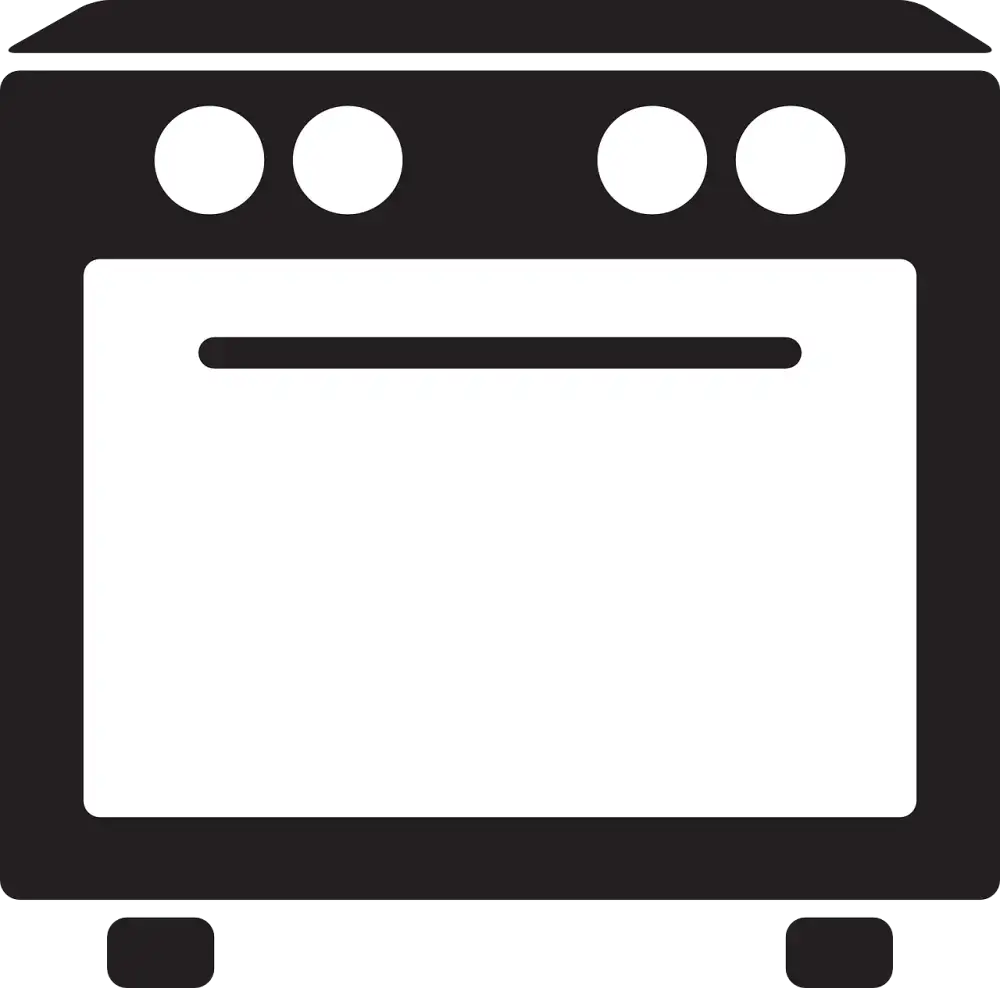Master the Art of Cooking with a Convection Oven: Your Ultimate Guide to Operating and Utilizing this Kitchen Appliance at Home

- Understanding the Basics of a Convection Oven
- Preparing Your Convection Oven for Use
- Adjusting the Temperature and Time Settings
- Using the Convection Fan for Even Cooking
- Positioning the Racks for Optimal Results
- Tips for Baking and Roasting in a Convection Oven
- Cleaning and Maintaining Your Convection Oven
- Troubleshooting Common Issues with Convection Ovens
Convection ovens have become a popular choice among home cooks and professional chefs alike. These innovative appliances offer a more efficient and even way of cooking, thanks to the circulation of hot air. By understanding the basics of how a convection oven works and learning how to utilize its features, you can elevate your culinary skills to new heights. In this ultimate guide, we will explore the various aspects of operating and utilizing a convection oven at home. From preparing your oven for use to mastering the art of baking and roasting, this comprehensive guide will equip you with the knowledge needed to become a convection oven maestro. So let's dive in and unlock the full potential of this remarkable kitchen appliance!
Understanding the Basics of a Convection Oven
A convection oven is a kitchen appliance that uses a fan to circulate hot air evenly throughout the cooking chamber. This results in faster and more efficient cooking compared to traditional ovens. The fan helps to distribute heat evenly, ensuring that your food cooks uniformly from all sides.
The main advantage of a convection oven is its ability to cook food faster. The circulating hot air reduces cooking time by up to 25%, making it ideal for busy individuals who want to save time in the kitchen. Additionally, the even distribution of heat ensures that your dishes are cooked evenly, preventing any undercooked or overcooked spots.
It's important to note that convection ovens can be used for baking, roasting, and even broiling. The fan can be turned on or off depending on the type of cooking you are doing. When using the convection setting, it's recommended to reduce the temperature by about 25 degrees Fahrenheit and decrease cooking time by approximately 20%.
Overall, understanding how a convection oven works will help you utilize this kitchen appliance effectively and achieve delicious results in your culinary adventures.
Preparing Your Convection Oven for Use
Before you start cooking with your convection oven, it's important to properly prepare it for use. Here are a few steps to follow:
1. Read the manual: Familiarize yourself with the manufacturer's instructions and guidelines. Each convection oven may have specific features and settings that you need to understand before using it.
2. Clean the oven: Ensure that your convection oven is clean and free from any residue or debris. Use a mild detergent and warm water to wipe down the interior and remove any grease or food particles.
3. Check the seals: Inspect the door seals of your convection oven to ensure they are intact and in good condition. Damaged or worn-out seals can affect the oven's performance and efficiency.
4. Preheat the oven: Set your convection oven to preheat at the desired temperature for about 10-15 minutes before placing any food inside. This will help ensure even cooking throughout your dishes.
5. Remove any accessories: Take out any racks, trays, or other accessories from the convection oven before preheating or cooking. This will prevent them from getting damaged or affecting airflow during cooking.
By following these simple steps, you can ensure that your convection oven is ready for use and will provide optimal results in all your culinary endeavors.
Adjusting the Temperature and Time Settings
Adjusting the temperature and time settings is crucial when using a convection oven. Unlike conventional ovens, convection ovens cook food faster and more evenly. To achieve the best results, it's important to adjust the temperature and cooking time accordingly. Most convection ovens have a temperature conversion feature that automatically adjusts the temperature for you. However, if your oven doesn't have this feature, you can simply reduce the temperature by 25 degrees Fahrenheit. Additionally, you should also reduce the cooking time by about 25%. Keep an eye on your food as it cooks to ensure it doesn't overcook or burn. By mastering the art of adjusting temperature and time settings, you'll be able to create delicious meals with ease in your convection oven.
Using the Convection Fan for Even Cooking
One of the key features of a convection oven is its powerful fan, which circulates hot air throughout the cooking chamber. This ensures that your food cooks evenly and quickly. To take advantage of this feature, simply turn on the convection fan before starting your cooking process.
The convection fan helps to distribute heat more evenly, preventing hot spots and ensuring that every part of your dish receives the same amount of heat. This is especially beneficial when baking delicate pastries or roasting meats, as it helps to achieve a golden brown crust while keeping the inside moist and tender.
When using the convection fan, you may need to adjust your cooking time and temperature settings. Since the hot air is constantly moving, food tends to cook faster in a convection oven compared to a conventional one. As a general rule, reduce the cooking time by about 25% and lower the temperature by 25 degrees Fahrenheit (or 15 degrees Celsius) when using the convection setting.
It's important to note that not all recipes are suitable for convection cooking. Foods that are already quick-cooking or have a delicate texture may not benefit from the intense airflow. In such cases, it's best to stick with traditional baking methods.
By utilizing the convection fan in your oven, you can achieve perfectly cooked dishes with even browning and consistent results every time. Experiment with different recipes and keep track of any adjustments you make to find what works best for you. With practice, you'll soon become a master at utilizing this fantastic feature in your convection oven.
Positioning the Racks for Optimal Results
The placement of racks in a convection oven is crucial for achieving the best cooking results. To ensure even airflow and consistent browning, it's important to position the racks correctly. For most recipes, placing the rack in the middle position is recommended. This allows hot air to circulate around the food evenly, resulting in uniform cooking. However, if you're baking multiple trays of cookies or pastries, consider using both upper and lower racks to accommodate them all. Just make sure to rotate the trays halfway through cooking for even browning. Experiment with different rack positions to find what works best for your specific dishes and enjoy perfectly cooked meals every time.
Tips for Baking and Roasting in a Convection Oven
When it comes to baking and roasting in a convection oven, there are a few tips that can help you achieve the best results. Firstly, it's important to reduce the temperature by about 25 degrees Fahrenheit compared to traditional recipes. This is because convection ovens cook food faster and more evenly. Secondly, use shallow pans or baking sheets with low sides to allow for better air circulation. This will help your baked goods rise evenly and develop a crispy exterior. Lastly, keep an eye on your food as it cooks since convection ovens tend to cook faster than regular ovens. By following these tips, you'll be able to bake and roast delicious dishes with ease using your convection oven.
Cleaning and Maintaining Your Convection Oven
To keep your convection oven in top shape, regular cleaning and maintenance are essential. Here are some tips to help you keep it clean and functioning optimally:
1. Regularly wipe down the interior of the oven with a damp cloth or sponge to remove any food spills or grease buildup. Avoid using abrasive cleaners that can damage the oven's surface.
2. Remove the racks and wash them separately using warm soapy water. Scrub off any stubborn stains or residue with a non-abrasive sponge or brush.
3. Clean the convection fan by gently wiping it with a soft cloth or brush to remove any dust or debris that may have accumulated.
4. If your oven has a self-cleaning function, make use of it periodically to tackle heavy grease and grime buildup. Follow the manufacturer's instructions for safe operation.
5. Pay attention to the oven door and its seals. Wipe them down regularly to prevent any food particles from getting trapped, which can lead to unpleasant odors over time.
6. Check and clean the vents located at the back of the oven to ensure proper airflow and prevent overheating.
7. Keep an eye on the exterior surfaces of your convection oven as well, wiping them down with a damp cloth as needed.
By maintaining a clean convection oven, you not only ensure better cooking results but also extend its lifespan. Regular cleaning will prevent odors, improve efficiency, and keep your appliance looking its best for years to come.
Troubleshooting Common Issues with Convection Ovens
While convection ovens are a fantastic addition to any kitchen, they can sometimes present a few challenges. Here are some common issues you may encounter and how to troubleshoot them:
1. Uneven Cooking: If you notice that your food is cooking unevenly, it could be due to improper rack positioning. Make sure to place the racks in the recommended positions for optimal airflow.
2. Burnt Food: If your food is burning on the outside but undercooked on the inside, it may be because of excessive heat. Reduce the temperature or shorten the cooking time to prevent this issue.
3. Excessive Drying: Convection ovens can sometimes cause food to dry out quicker than traditional ovens. To combat this, try using a lower temperature or covering your dishes with foil during cooking.
4. Fan Noise: It's normal for convection ovens to produce some noise due to the fan running continuously. However, if you notice any unusual or excessively loud noises, it's best to contact a professional for inspection and repair.
5. Incorrect Temperature: If you find that your convection oven is not reaching or maintaining the desired temperature, check if there are any faulty components such as heating elements or sensors. In such cases, it's advisable to seek professional assistance.
Remember, mastering the art of cooking with a convection oven takes practice and experimentation. Don't be discouraged by these common issues; instead, use them as learning opportunities to enhance your culinary skills and create delicious meals for yourself and your loved ones!
In conclusion, mastering the art of cooking with a convection oven can greatly enhance your culinary skills and elevate your dishes to a whole new level. By understanding the basics of a convection oven, preparing it for use, and adjusting temperature and time settings, you can ensure even cooking and perfect results every time. Utilizing the convection fan and positioning the racks correctly will further enhance the efficiency of your oven. Remember to follow tips for baking and roasting to achieve deliciously crispy and evenly cooked meals. Regular cleaning and maintenance will keep your convection oven in top shape for years to come. With practice and experimentation, you'll soon become a pro at utilizing this versatile kitchen appliance to create mouthwatering meals that will impress family and friends alike. So go ahead, dive into the world of convection cooking, and savor the flavors of life!
Published: 29. 12. 2023
Category: Home



